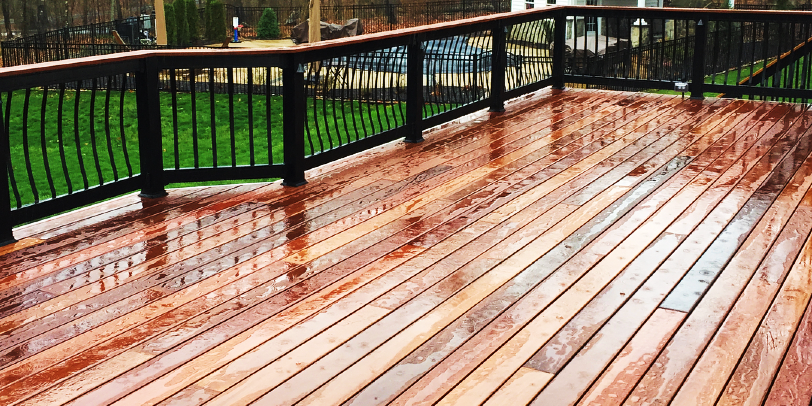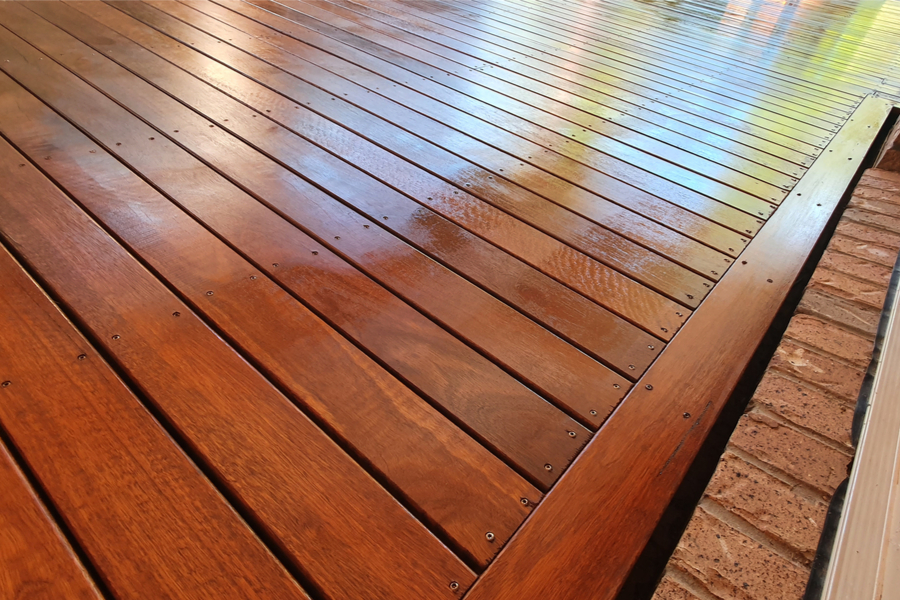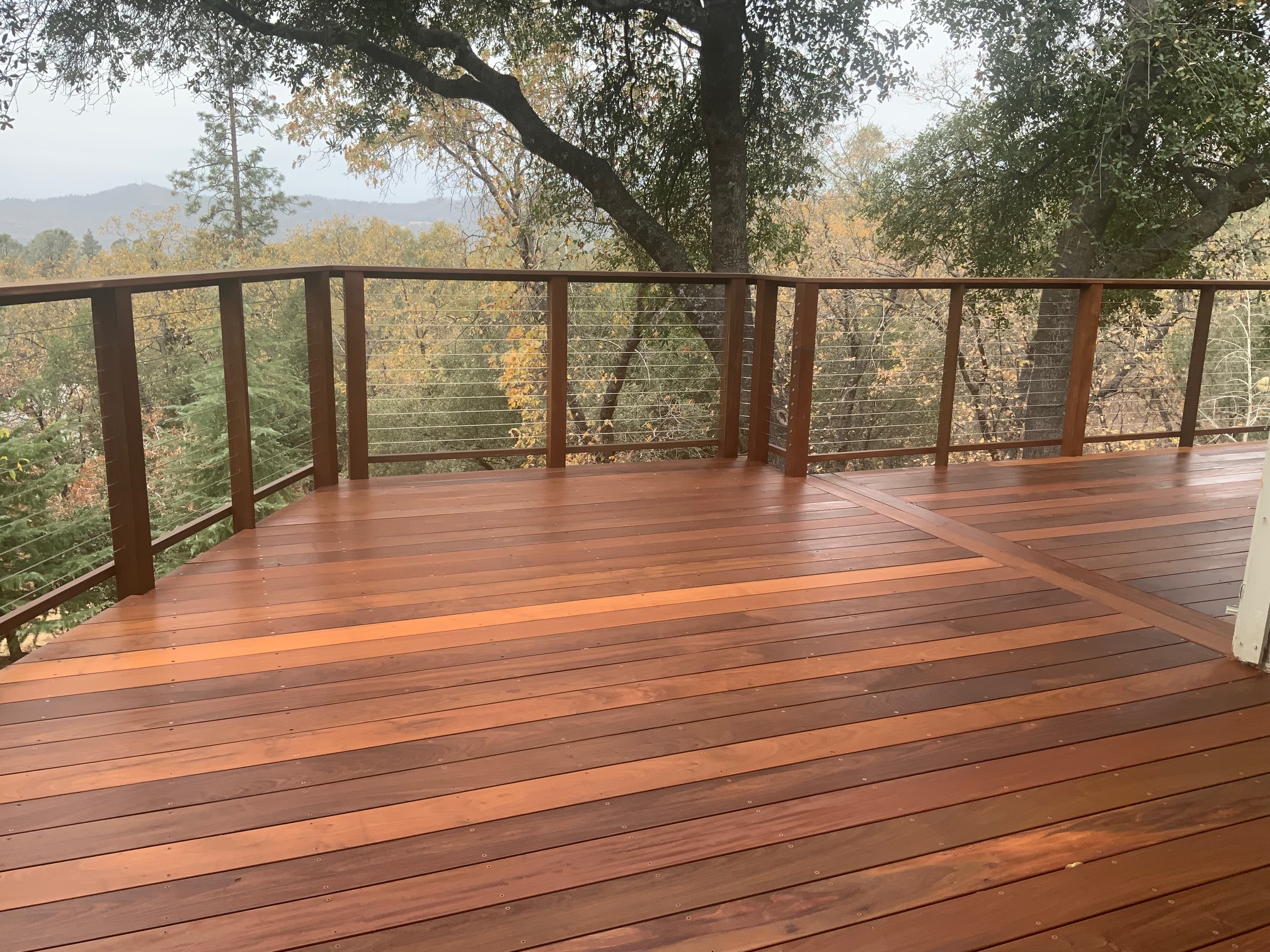Enhanced Defense: Fence Staining and Sealing Solutions
Enhanced Defense: Fence Staining and Sealing Solutions
Blog Article
Choosing the Right Stain for Your Fence: Tips and Considerations
When it comes to maintaining and improving the look of your fencing, choosing the appropriate discolor is critical. We will certainly discover the different kinds of fencing spots, aspects to take into consideration prior to selecting a discolor, pointers for preparing your fencing for staining, and the distinctions in between oil-based and water-based discolorations. Additionally, we will dig into picking the best stain shade to match your fencing and improve your exterior space.
Comprehending Different Types of Fence Spots

On the various other hand, water-based discolorations are made from acrylic or latex and use a more refined color to the timber. They create a protective movie on the surface of the timber, avoiding wetness from leaking in and safeguarding against UV damage. Water-based discolorations are simpler to tidy up and have a faster drying time compared to oil-based spots. They are likewise much less likely to fade or break over time.
Choosing between water-based and oil-based discolorations depends upon various variables, consisting of individual preference, the wanted appearance, and the degree of upkeep required. Oil-based spots are advised for fences in high-traffic locations or those regularly revealed to severe weather. deck staining. Water-based spots, on the various other hand, are a preferred selection for fencings in suburbs where look and convenience of usage are very important
When picking the appropriate tarnish for their fencing,Understanding the distinctions in between oil-based and water-based spots aids home owners make an informed choice. Considering the specific needs of the fencing, such as its location, exposure to sunshine, and desired aesthetic, will guarantee that the selected discolor offers resilient protection and enhances the total charm of the fencing.
Variables to Consider Before Selecting a Spot

One more variable to consider is the kind of timber your fencing is made of. Different kinds of timber take in spots in different ways, leading to differing levels of color intensity and longevity. For instance, softwoods like ache may need more constant discoloration contrasted to woods like cedar or redwood. Furthermore, particular timbers may be a lot more prone to concerns like rot or insect invasion, which may impact the selection of discolor to maintain the fence and secure.
The climate and climate condition in your location must also be taken into consideration. If you live in a location with extreme winter seasons or high humidity, you may require a discolor that supplies extra security versus moisture and UV rays. Furthermore, if your fence is revealed to route sunshine for extended periods, a discolor with UV inhibitors can aid protect against fading and staining.
Last but not least, it's essential to consider your desired aesthetic. Various stains use various colors and coatings, allowing you to personalize the appearance of your fence (fence staining and sealing). Think about the total design and style of your property, as well as any neighborhood regulations or homeowner organization guidelines that may dictate the acceptable discolor shades
Tips for Preparing Your Fence for Discoloration
Cleansing the fence is an important step as it eliminates dust, crud, and any previous finishes that may interfere with the discoloration procedure. Rub the surface gently, paying added attention to locations with persistent spots or mold and mildew.
This action is vital as staining a damp or moist surface area can lead to bad adhesion and an unequal finish. Make sure that the fencing is completely dry prior to proceeding with the discoloration procedure.
Before discoloration, examine the fencing for any type of problems, such as loose boards or nails. This product assists to open up the wood pores, allowing the tarnish to permeate much more properly and equally.

Contrasting Water-Based and oil-based Spots
When selecting a discolor for your fencing, it is necessary to compare the characteristics and benefits of oil-based and water-based spots. Both sorts of stains have their own benefits and considerations, so it is essential to recognize the distinctions between them.
Oil-based stains are known for their resilience and resistance to use and tear. In addition, oil-based discolorations tend to last longer than water-based spots, making them a popular selection for fencings.
On the other hand, water-based stains are a lot more environmentally pleasant and much easier to cleanse up. They have a reduced VOC (volatile organic substance) material, which indicates they launch less unsafe fumes right into the air. Water-based stains additionally dry much faster, allowing for a quicker application and much less downtime. They might not provide the same degree of security as oil-based stains, especially in rough weather condition problems.
Ultimately, the selection between water-based and oil-based spots relies on your particular demands and preferences. Take into consideration elements such as resilience, ecological impact, and simplicity of application when making your choice. Consulting with a professional or seeking recommendations from professionals can also assist guarantee that you choose the ideal tarnish for your fence.
Selecting the Right Spot Color for Your Fencing
The option of a proper discolor shade for your fencing is an important element of improving its aesthetic appeal and enhancing the general layout of your outside area (fence staining nashville tn). The best tarnish shade can change a plain, regular fencing right into a striking centerpiece that includes deepness and character to your residential or commercial property
When selecting a stain shade for your fencing, it is very important to take into consideration the design and design of your home. Natural tones such as neutrals and browns can produce a warm and welcoming appearance if you have a classic or typical style home. On the various other hand, if you have a modern or modern-day home, you might think about opting for strong and vivid shades that make a statement.
An additional aspect to consider is the natural environments of your residential or commercial property. If you have a great deal of plant, a tarnish color that matches the all-natural landscape, such as eco-friendlies or crimsons, can develop a natural and unified look.
Furthermore, it deserves considering the upkeep required for various tarnish colors. official website Lighter colors tend to reveal dirt and put on more easily, while darker colors can hide flaws and call for much less constant touch-ups.
Inevitably, the option of tarnish shade for your fence must show your personal design and choices - fence staining. Put in the time to check out various alternatives and speak with with experts if required, to make certain that you pick the ideal tarnish color that enhances the charm and allure of your fencing
Conclusion
To conclude, when it comes to selecting the right tarnish for your fence, it is necessary to comprehend the various kinds of spots readily available and consider factors such as longevity and wanted appearance. Preparing the fencing correctly prior to staining is essential for accomplishing optimum outcomes. Furthermore, comparing water-based and oil-based spots can aid identify the most effective alternative for your certain requirements. Selecting the best stain color can enhance the total visual appeals of your fence.
We will check out the different types of fence stains, factors to take into consideration prior to selecting a stain, pointers for preparing your fencing for discoloration, and the distinctions between water-based and oil-based spots.Differentiating between water-based and oil-based spots is vital when comprehending different kinds of fence stains. Water-based discolorations are much easier to cleanse up and have a quicker drying out time compared to oil-based spots. In addition, oil-based spots often tend to last longer than water-based stains, making them a prominent selection for fences.
In final thought, when it comes to picking the right discolor for your fencing, it is vital to understand the various kinds of spots readily available and consider variables such as sturdiness and wanted look.
Report this page